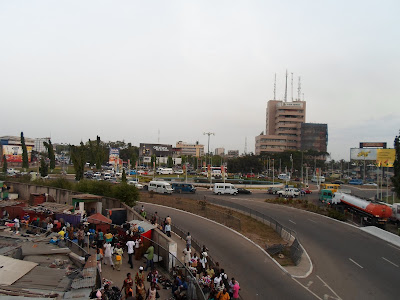Chest Pain, breathlessness, fatigue and weight loss. These were the presenting signs and symptoms of the 67 year old woman with the big heart. Our patient is a lovely woman, very strong and rarely complains, but when you look at her face you can tell she is in unbearable pain. Even worse, more and more pain accumulates with each breath.
 |
| Our patient's chest x-ray, showing an enlarged cardiac silhouette. |
Cardiac tamponade is very rare, only affecting 2 out of every 10,000 people in the United States, but since I have been in Ghana I have seen 3 cases- all on the same hospital floor.
 |
| A chest x-ray showing a normal cardiac silhouette. |
In tamponade, the heart becomes compressed when blood or fluid builds up in the space between the myocardium (heart muscle) and the pericardium (outer covering sac of the heart). The excess pressure from the fluid prevents the heart from expanding fully and functioning normally. Our patient had an echocardiogram (ultrasound of the heart) that showed part of her heart had actually collapsed under the pressure.
 |
The fluid accumulates in the space shown, where the flap is being pulled back.

A needle was placed in the pericardial space to drain the fluid. Keeping in mind that the normal physiological amount of fluid kept in the space around the heart is only a few cc’s, it is astonishing to think that 1,000 cc’s (1 liter) of hemorrhagic (bloody) fluid was drained from our patient’s pericardial space.

A giving system, to collect the fluid from around the heart, was hooked up to a bag normally used to collect urine. The hospital ran out of the usual collecting container, but this worked pretty well. The most interesting thing about this case is the cause of the tamponade- Tuberculosis (TB) pericarditis. TB is an infection that is very common is Ghana, but much less common in the states. In fact, this is the first case of TB I have seen during my 4 years of medical school.

Now that the fluid has been drained from around her heart, our patient is much more comfortable, can breathe deeply without pain, and has a smile on her face:-).
- Ohemaa, Mimi :-)















































